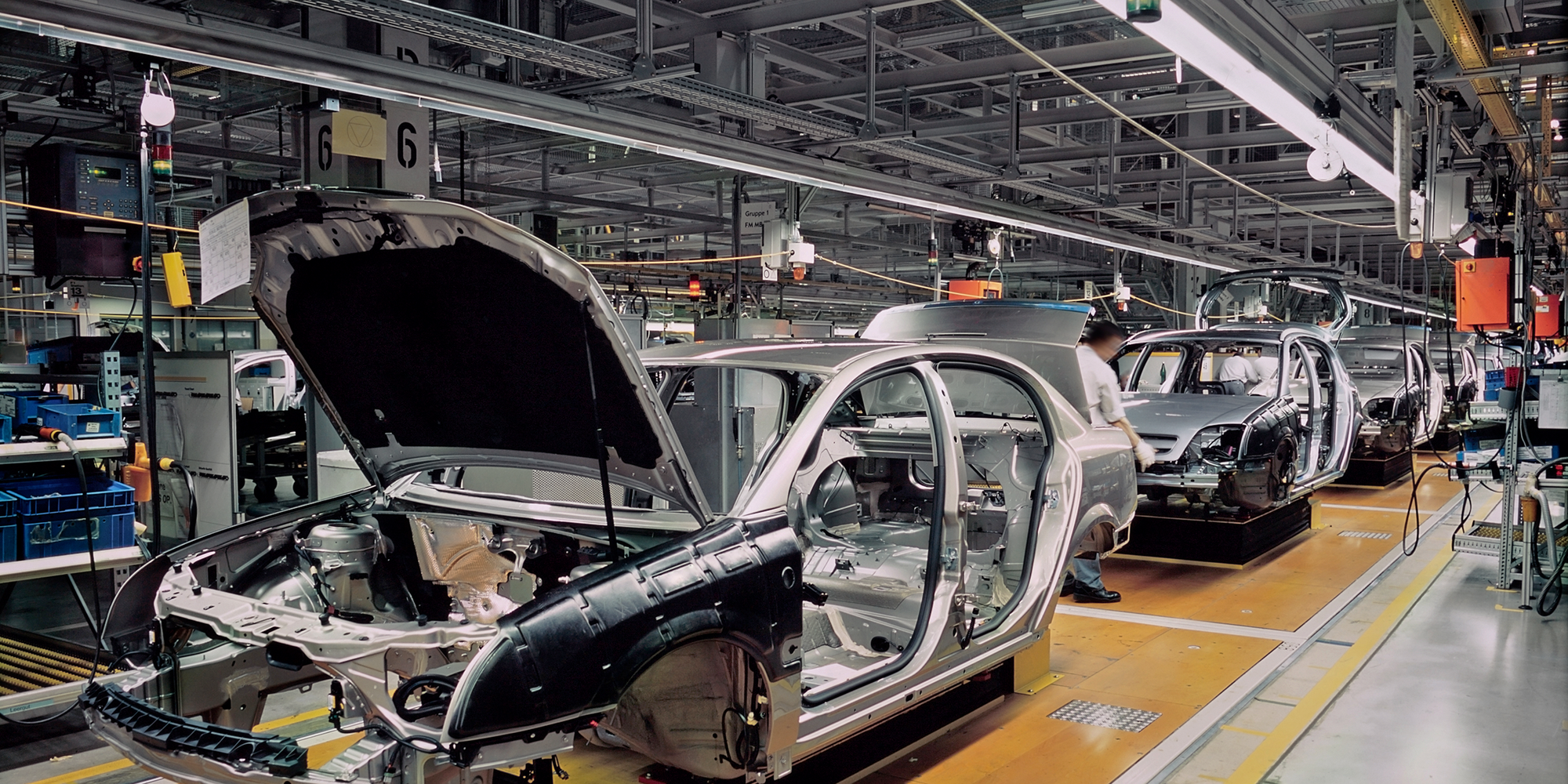Ban on combustion engines – impact on motor vehicle stocks
Car manufacturers are in challenging terrain. Now, the European Union's recent ban on combustion engines is exacerbating the situation. What does this mean for car manufacturers in general and their stocks in particular?
Text: Diego D'Argenio and Manuel Renz

Over the past three years, car manufacturers have faced several obstacles. Volume production fell by more than 20 percent in some cases, an array of raw material prices climbed to record levels, the coronavirus pandemic caused supply bottlenecks and, at the same time, demand for electric vehicles is skyrocketing. Nonetheless, the number of cars produced worldwide is picking up momentum again. Production is expected to return to pre-pandemic levels by the end of the current year (Figure 1).

European car manufacturers have mastered these obstacles brilliantly. In the past two years, revenue in the entire sector has climbed by an average of 15 percent and profit margins have been significantly higher than in 2018 to 2020 (Figure 2).

The results were achieved through a combination of higher car prices and good cost discipline. They represent good crisis management in the face of the difficult market environment of the past years.
However, the pace is likely to slow in the future. The market consensus anticipates a normalisation of sales growth to 3.3 percent per year over the next three years. Interestingly, the market expects companies to maintain their profitability at a high level despite weaker revenues, which has also led to car equities holding up relatively well (outperformance since the beginning of the year is calculated at 17 percent in CHF versus MSCI World, as of 10 April 2023).
Consensus estimates put to the test
European automotive manufacturers are setting high targets for the introduction of battery electric vehicles (BEVs). The majority are planning a BEV share of 80 percent of total sales revenue by 2030. This is also necessary because the European Union recently passed a law that does not allow the sale of new petrol or diesel cars from 2035. But one thing is for sure: at present, only about one in ten automobiles produced by manufacturers is a BEV. European car manufacturers therefore still have a lot to do to achieve the self-imposed short-term and long-term sales targets.
Converting production from combustion-engine vehicles to electric vehicles and developing battery capacities will have a major financial impact. This is demonstrated in particular by the comparison between the anticipated operating cash flow for 2023 and the planned total investment in the switch to electric vehicles by 2030. Accordingly, investment exceeds cash flow several times over.
Share of BEVs in vehicles sold |
BEV targets |
Operating cash flow |
BEV invest-ments (in bil. USD) |
||
| 2021 | 2022 | 2030 | 2023E | 2030 | |
| BMW | 3.00% | 7.00% | 50% | 18.9 | 36.5 |
| Mercedes-Benz | 10.00% | 13.00% | 100% | 18.3 | 37.0 |
| Renault | 10.00% | 12.00% | 100% | 5.3 | 11.8 |
| Stellantis | 6.00% | 10.00% | 100% | 23.3 | 35.5 |
| Volkswagen | 8.00% | 8.00% | 80% | 38.9 | 122.0 |
| Volvo | 4.00% | 11.00% | 100% | 2.5 | 7.1 |
Source: Reuters, Bloomberg, Company Information
As a result, shareholders of automotive manufacturers must expect both lower margins as well as lower free cash flow and earnings per share in the short to medium term if car manufacturers are unable to pass on the additional investment costs to customers. This cost allocation is unlikely to be realistic in the current market environment with high inflation, lower consumer spending power and sharp price reductions in the electric vehicle segment.
Relocation of production to subsidy-friendly regions
In the fight against climate change, countries are offering high subsidies to promote electromobility. This also benefits suppliers. One example is the Inflation Reduction Act (IRA) in the US. In addition to direct rewards for automotive buyers (BEVs) amounting to USD 7,500, there are also a number of tax benefits to boost battery production in the US and reduce the dependency on China. Nearly all components of the BEV powertrain are treated generously here. This is already leading to European automotive manufacturers halting further expansion in Europe and building up battery capacities more in the US and Canada.
The European Union is responding to the tendency of automotive manufacturers to migrate with two legislative proposals: the Critical Raw Materials Act and the Net Zero Industry Act. Both are currently pending a vote. They are intended to reduce dependence on China and intensify competition with the US and China.
Implications for investors
From a valuation perspective, the European automotive sector is clearly attractive and is trading at very low multiples compared to the global sector (Figure 3).

Nevertheless, valuations do not fully reflect the fundamental challenges the sector will face in the coming quarters. We therefore believe that the sector does not offer an attractive investment opportunity for three reasons:
- The operating margin will be under pressure in the coming quarters. The automotive industry is a very capital-intensive business, the combination of weak demand and increasing investment to support the adoption of electric vehicles makes the current profitability level unsustainable.
- The transition to electric vehicles will require significant investment in the automotive supply chain to minimise potential geopolitical and pandemic risks. This is expected to weigh on the industry's profitability for several years.
- The rising recession risk indicates weaker global demand, which has not yet been reflected in market expectations in terms of revenue and margin.


